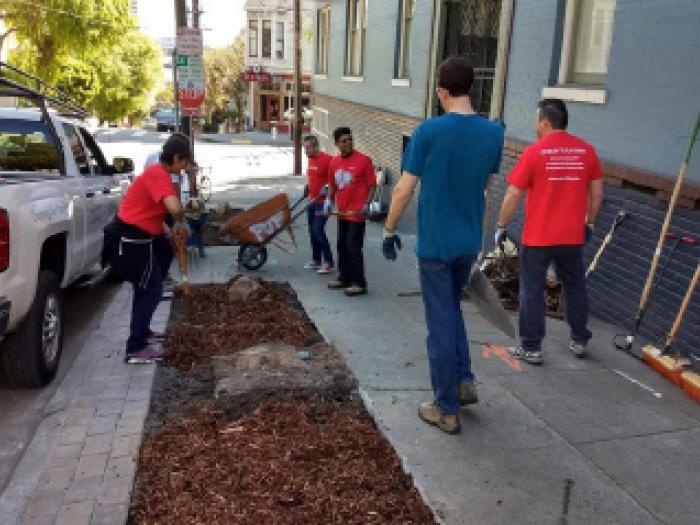
Implementing our Community Plans
Over the past several years, the Planning Department, in collaboration with community stakeholders, has developed and adopted several Area Plans to guide neighborhood growth and change, and imagine community improvements and programs 20 years into the future. As the Area Plan neighborhoods gain new residents and workers, there is an accompanying need for improved public infrastructure and amenities, such as parks, street improvements, transit and child care centers.
Interagency Plan Implementation Committee (IPIC)
The Interagency Plan Implementation Committee (IPIC), as outlined in Administrative Code Chapter 36, is comprised of representatives of the City implementing agencies that are responsible for the provision of the community improvements as outlined in the Area Plans.
The IPIC report provide snapshots of the success of certain Area Plans, assessing development patterns, impact fee projections, and capital projects.
IPIC Annual Report
Citywide Nexus Study
The Citywide Nexus study presents the nexus analysis findings of new growth’s connection (nexus) to facilities for recreation and open space, childcare, streetscape and pedestrian infrastructure, and bicycle infrastructure.
- San Francisco Citywide Nexus Analysis (December 2021)
- San Francisco Infrastructure Level of Service Analysis (December 2021)
Citywide Data and Analysis Reports
The Planning Department also publishes annual reports which cover annual housing production, commerce and industry, and downtown trends – see Data and Analysis Reports.
Other Resources
Impact fee revenue has contributed to a wide variety of projects of different types and scales, while playing different funding roles for those projects.
They include funding major portions of new parks, such as:
- Guy Place Park (Rincon Hill), and
- In Chan Kaajal Park (Mission)
Along with major park renovations, such as:
- South Park (SoMa), and
- Margaret Hayward Park (Market Octavia)
It has contributed to smaller ongoing community-based projects through:
- the Living Alleys Program (Market Octavia), and
- the Eastern Neighborhoods Community Challenge Grants (Eastern Neighborhoods)
It has funded new buses and light rail vehicles and contributed to street improvements for bicyclists, transit and pedestrians:
- Upper Market Improvements (Market Octavia)
- 16th Street Improvements (Showplace Square and Mission), and
- 2nd Street (SoMa)
The revenue has gone to ongoing funding for child care centers in the Eastern Neighborhoods, SoMa, and Market Octavia. So far, the City has raised about $300M in impact fee revenue and expects to raise about $400M over the next ten years.
Implementation of Capital Projects in Adopted Area Plans
To learn more about adopted Area Plans and associated capital projects, visit the Implementation of Capital Projects in Adopted Area Plans StoryMap.
The dashboard below highlights reports from the Area Plan neighborhood plans, highlighting and documenting ongoing progress in delivering community improvements as part of Implementing Our Community Plans.
To begin reviewing the dashboard reports, click on the button "View Interactive Content". Click here to view this dashboard in a larger window.
Monitoring Reports for Plan Areas
Monitoring Reports Archive for:
- Balboa Park
- Central Waterfront Plan
- East SoMa Plan
- Market and Octavia
- Mission Plan
- Showplace Square/Potrero Hill Plan
- Western SoMa Plan
To further implement the Area Plans, the Planning Department has published the following reports, plan and strategies to identify community needs for infrastructure and community improvements and identifying those capital projects that will meet those needs.
- Mission District Streetscape Plan
- Showplace Square Open Space Plan
- EN Trips (SFMTA)
- Balboa Park Station Transportation Projects (SFMTA)
- Ocean and Geneva Corridor Design Plan
- Central Waterfront Dogpatch Public Realm Plan
- The HUB Public Realm Plan
- Central SoMa Plan & Implementation Document
- Rincon Hill Streetscape Master Plan
Community Advisory Committees
